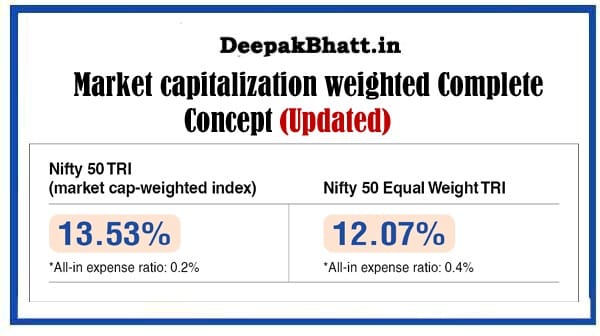This blog post aims to dissect the nuances of liquidity risk, exploring its definition, sources, and strategies to navigate the challenges it presents.
- 1 I. Unveiling Liquidity Risk
- 1.1 1. Defining:
- 1.2 2. Sources of Liquidity Risk:
- 1.3 II. The Impact of Liquidity Risk
- 1.4 1. Price Impact:
- 1.5 2. Forced Liquidation:
- 1.6 3. Funding Challenges:
- 1.7 III. Strategies for Managing Liquidity Risk
- 1.8 1. Diversification:
- 1.9 2. Stress Testing:
- 1.10 3. Access to Contingency Funding:
- 1.11 4. Monitoring Market Conditions:
- 1.12 5. Maintaining Adequate Cash Reserves:
- 1.13 IV. The Role of Central Banks
- 1.14 1. Central Bank Interventions:
- 1.15 2. Monetary Policy Measures:
- 1.16 V. Ongoing Challenges and Considerations
- 1.17 1. Evolving Market Dynamics:
- 1.18 2. Regulatory Compliance:
- 1.19 VI. Conclusion: Sailing the Seas of Financial Markets
I. Unveiling Liquidity Risk
1. Defining:
It is the vulnerability of an asset or security to be quickly bought or sold in the market without causing a significant change in its price. In simpler terms, it’s the risk that an investor may not be able to sell an investment promptly at its fair market value due to a lack of willing buyers or sellers.
2. Sources of Liquidity Risk:
Liquidity risk can emanate from various sources, including:
- Market Liquidity: Fluctuations in supply and demand for a security in the market.
- Asset-Specific Factors: Unique characteristics of an asset impacting its traceability.
- Funding Liquidity: Difficulty in obtaining funds to meet financial obligations.
II. The Impact of Liquidity Risk
1. Price Impact:
One of the direct consequences of liquidity risk is its potential to impact the price of an asset. Illiquid assets may experience more significant price changes when trades occur, leading to increased volatility.
2. Forced Liquidation:
Investors facing liquidity risk may be compelled to sell assets under unfavorable conditions, potentially incurring losses. This forced liquidation can be triggered by unforeseen events or financial distress.
3. Funding Challenges:
Institutions relying on short-term funding may encounter difficulties if liquidity dries up. This can lead to a liquidity crisis, impacting the entity’s ability to meet its financial obligations.
III. Strategies for Managing Liquidity Risk
1. Diversification:
Diversifying a portfolio across different asset classes can mitigate liquidity risk. While one asset may experience liquidity challenges, others may remain tradable, providing a buffer against adverse market conditions.
2. Stress Testing:
Conducting stress tests allows investors and institutions to assess how their portfolios would perform under adverse conditions. This proactive approach helps identify potential liquidity risks and allows for strategic adjustments.
3. Access to Contingency Funding:
Having access to contingency funding sources, such as lines of credit, can provide a safety net during periods of liquidity stress. This ensures that financial obligations can be met even in challenging market conditions.
4. Monitoring Market Conditions:
Keeping a close eye on market conditions and staying attuned to potential liquidity events enables proactive decision-making. This includes closely monitoring economic indicators, market sentiment, and geopolitical events that could impact liquidity.
5. Maintaining Adequate Cash Reserves:
Holding an adequate amount of cash or highly liquid assets provides a buffer during market stress. It allows investors to meet immediate funding needs without selling assets under unfavorable conditions.
IV. The Role of Central Banks
1. Central Bank Interventions:
Central banks play a crucial role in managing systemic liquidity risk. During periods of financial stress, central banks may intervene by providing liquidity to financial institutions, stabilizing markets, and preventing a broader liquidity crisis.
2. Monetary Policy Measures:
Central banks use various monetary policy tools, such as interest rate adjustments and quantitative easing, to influence liquidity conditions in the financial system. These measures aim to ensure the smooth functioning of financial markets.
V. Ongoing Challenges and Considerations
1. Evolving Market Dynamics:
The nature of liquidity risk is dynamic, influenced by evolving market conditions, regulatory changes, and technological advancements. Investors and institutions must adapt their strategies to navigate these shifts effectively.
2. Regulatory Compliance:
Regulatory frameworks often mandate certain liquidity requirements for financial institutions. Adhering to these regulations is crucial to maintaining financial stability and safeguarding against liquidity risk.
Complete the JavaScript Freemium Free Course
Web Development Bootcamp With 85% Discounted
What is the Sharpe Ratio? Definition, Formula
Capital Asset Pricing Model (CAPM) Complete Guide
VI. Conclusion: Sailing the Seas of Financial Markets
In conclusion, liquidity risk is a fundamental consideration for investors, institutions, and policymakers navigating the seas of financial markets. As the tides of market conditions ebb and flow, understanding, monitoring, and effectively managing liquidity risk is paramount.

















